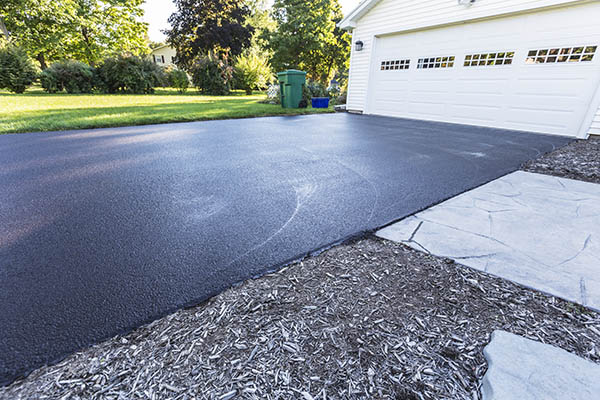Make The Most Of Investment Returns: Angled Car Park Excellence with Asphalt Sealing
Make The Most Of Investment Returns: Angled Car Park Excellence with Asphalt Sealing
Blog Article
Hot Mix Asphalt: A Lasting Solution for Pavement
Warm Mix Asphalt (HMA) has emerged as a leading lasting selection for pavement remedies, supplying a myriad of cutting-edge modern technologies and environmental advantages. Its capability to recycle products and decrease power intake presents a compelling instance for its adoption in road building and construction projects. Moreover, the long-term efficiency and sturdiness of HMA make it a favored alternative for framework development. As the need for green building and construction techniques grows, discovering the nuances of HMA's sustainability can supply beneficial insights right into the future of sidewalk remedies.
Environmental Advantages of Hot Mix Asphalt

Additionally, Hot Mix Asphalt aids to alleviate metropolitan heat island results. Its dark shade soaks up sunlight, reducing the amount of warmth showed back into the atmosphere compared to lighter-colored sidewalks. This can lower ambient temperature levels in urban areas, decreasing the need for air conditioning and inevitably lowering energy usage.
In addition, Warm Mix Asphalt adds to enhanced stormwater management. Its permeable nature allows water to infiltrate the sidewalk and recharge groundwater products, decreasing runoff and the threat of flooding. These environmental advantages make Hot Mix Asphalt a lasting selection for leading highways and roads.
Power Performance in HMA Production
Is energy effectiveness a critical variable in the production of Hot Mix Asphalt (HMA)? Energy plays a significant function in the manufacturing of HMA, affecting both expense and environmental sustainability. One crucial facet of power performance in HMA production is the use of cozy mix asphalt (WMA) technologies.
Moreover, improvements in plant technologies have actually led to more energy-efficient HMA production procedures. By maximizing energy use in HMA manufacturing, the industry can reduce its carbon footprint while preserving top quality sidewalk products.
Recyclability of Hot Mix Asphalt
The recyclability of Warm Mix Asphalt (HMA) is a crucial aspect of its sustainability and lasting ecological impact. HMA is among one of the most recycled products in the United States, with over 100 million lots of reclaimed asphalt pavement (RAP) being recycled yearly in new sidewalk building. Reusing HMA offers several ecological advantages, such as reducing the requirement for virgin products, decreasing power consumption throughout production, and lowering the amount of waste sent to landfills.
The process of recycling HMA entails grating the existing sidewalk, squashing it into smaller pieces, and blending it with new aggregate and asphalt binder to produce a recycled mix. On the whole, the recyclability of HMA plays a substantial role in promoting lasting practices within the pavement market.

Long-Term Efficiency of HMA
Asphalt pavements demonstrate sturdiness and strength over an extended period, mirroring the long-term performance of Warm Mix Asphalt (HMA) The long life of HMA can be credited to its ability to stand up to hefty traffic lots, severe weather, and the effects of aging. Research studies have shown that well-designed and appropriately created HMA pavements can last for 20 years or even more with routine maintenance. The secret to optimizing the long-lasting performance of HMA depends on using high-quality materials, following best techniques in building and construction, and carrying out efficient maintenance approaches. Appropriate drain, routine examinations, and timely fixings are necessary for maintaining the structural honesty of HMA pavements over time. In addition, developments in HMA technology, such as making use of polymer-modified binders and warm mix asphalt, have actually better enhanced the durability and durability of HMA pavements. By focusing on high quality building and construction and upkeep techniques, HMA continues to verify itself as a cost-efficient and sustainable solution for durable pavement framework.

HMA: Durability and Sustainability
Demonstrating both durability and sustainability, Hot Mix Asphalt (HMA) has actually ended up being a foundation in the building and construction of lasting sidewalk facilities - regrading. HMA's toughness comes from its capacity to endure heavy loads, extreme weather, click to investigate and high website traffic quantities, making it a trusted selection for highways, freeways, and flight terminal runways. The composition of HMA, which typically includes aggregates, binder, and filler, plays an important function in improving its long life and resistance to damage
In addition, HMA's sustainability hinges on its recyclability and energy-efficient manufacturing process. The capacity to reuse redeemed asphalt sidewalk (RAP) in new HMA combinations reduces the need for virgin products and decreases the ecological effect of sidewalk building and maintenance. Additionally, the power efficiency of producing HMA lies in its reduced blending temperatures compared to other pavement materials, leading to reduced energy usage and greenhouse gas exhausts.
Final Thought
In final thought, warm mix asphalt (HMA) uses a lasting remedy for sidewalk with its eco pleasant characteristics. HMA's recyclability, energy effectiveness in manufacturing, and long-term longevity make it an environmentally friendly choice for road construction. By conserving natural resources, decreasing waste, and lowering greenhouse gas emissions, HMA plays a vital role in promoting sustainability in infrastructure growth. Its ability to alleviate metropolitan warm island impacts even more highlights its relevance in creating environmentally aware and resilient sidewalk systems.
HMA is one of the most recycled products in the United States, with over 100 million bunches of recovered asphalt sidewalk (RAP) being reused each year in new pavement building and construction.The process of reusing HMA includes crushing the existing pavement, squashing it right into smaller sized pieces, and mixing web it with new aggregate and asphalt binder to produce a recycled mix.Asphalt sidewalks demonstrate resilience and check it out strength over an extensive period, mirroring the long-term efficiency of Hot Mix Asphalt (HMA) In addition, improvements in HMA technology, such as the usage of polymer-modified binders and cozy mix asphalt, have actually even more boosted the sturdiness and durability of HMA sidewalks. The ability to recycle reclaimed asphalt pavement (RAP) in brand-new HMA mixes decreases the demand for virgin materials and reduces the environmental influence of pavement building and upkeep.
Report this page